Monthly after birth is an important hormonal process, indicating the health of a woman. Critical days come immediately after the end of breastfeeding.
Contents of
- When do menstrual periods occur after delivery?
- How many monthly periods after childbirth?
- How to distinguish the monthly after delivery from bleeding?
- The nature of the months after birth, what is the difference between monthly after birth?
- When will the monthly after delivery be given during breastfeeding?
- After the delivery of ample monthly, what should I do?
- Causes of copious monthly after childbirth
- Causes of painful menstrual after childbirth
- Why is there no monthly after delivery?
- Monthly after delivery:
- reviews Video: Monthly after birth
When do menstrual periods occur after delivery?
Resumed critical days - superior sign complete rehabilitation of female organism after delivery . worth note , that
stronger all absolutely all women recently become moms care not himself fact arrival menstrual days, and opportunity unexpectedly again pregnant.For moreall , at presence of a small child such hasty pregnancy is not desirable , and means need be « on check «. Understand in this question will help advice physicians and complete possession information about features of your organism .
 how and when the first month after the birth of the
how and when the first month after the birth of the - comes. Most female doctors and the generally accepted rule says that a full return of the monthly should be expected almost immediately after the end of breastfeeding. Nature decided for us that while a woman has a baby on breastfeeding, she should not have children, and if she finishes feeding - her child is old enough. And after all it is really the truth: it is necessary to breastfeed a child to two to three years. Having reached this age it can be considered independent and adult
- Modern living conditions dictate their conditions. Store shelves are filled with products of artificial feeding, mothers need to return to work time, the first lure begins with 4 months. .. and women simply do not want to give breast milk to their children. Most often, feeding ends in a year or even earlier - at 6 months.
Breastfeeding and the onset of menstruation - the two most important hormonal processes in the female body and interference in their course is fraught with some unpleasant consequences: a violation of the physiological and psychological health.
How many months after birth?
It is important to know that the first two or three months a month's bleeding may not be regular. Only after a time the cycle is fully restored. Not infrequent are cases of the appearance of menstruation and with active breastfeeding. Such an event does not always mean a deviation or a problem, but it is necessary to appear to a gynecologist. Only he can exclude the presence of the disease.
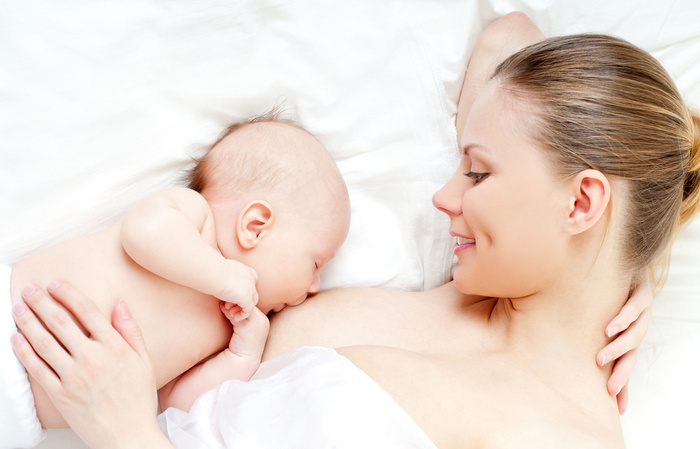 breastfeeding and monthly after birth
breastfeeding and monthly after birth After the woman has successfully given birth, she can feel in her body some changes:
- characteristic pain during menstruation, appearing in the lower abdomen become softer or completely disappear
- blood menstrual discharge becomes more abundant or less large-scale
- monthly lasts longer or vice versa,
ends faster. If you have finished breastfeeding, and the months have not come after two or three months - it is worthwhile to see a doctor. This phenomenon may well symbolize the presence of a tumor or another pregnancy.
After birth, the men restore their "stationary mode" for three months. While this time has not passed you can observe their instability and not the cyclicity: then large, then small. Doctors emphasize that if critical days are too long( from seven to ten days), then this is an excuse to get worried and ask for advice.
How to distinguish the monthly after delivery from bleeding?
During pregnancy, the fetus was tightly attached to the uterine wall by the placenta. Fetal nutrition was performed with the help of blood vessels. During childbirth the fetus breaks away from the uterus, leaving behind bleeding wounds. That's why a woman watches her abundant blood discharge for the first month after delivery. The uterus actively tries to come to a normal state and is regularly cleaned, throwing out the remains of blood, placenta and clots.
Bloody discharge appears immediately after the birth of the baby and accompanies the woman from 10 to 20 days. In the event that the active release of blood does not stop - you should immediately call your doctor.
There is a definition for such blood extracts. They are called lochia. It's not difficult to distinguish between the lochia and the monthly ones, although they are similar in the first days. The first days of lochis are characterized by abundant scarlet and red secretions with impurities of mucus, placenta and ruptured blood vessels. As the healing proceeds, the blood will darken and acquire a brown tint, by the end it can become completely beige or transparent.
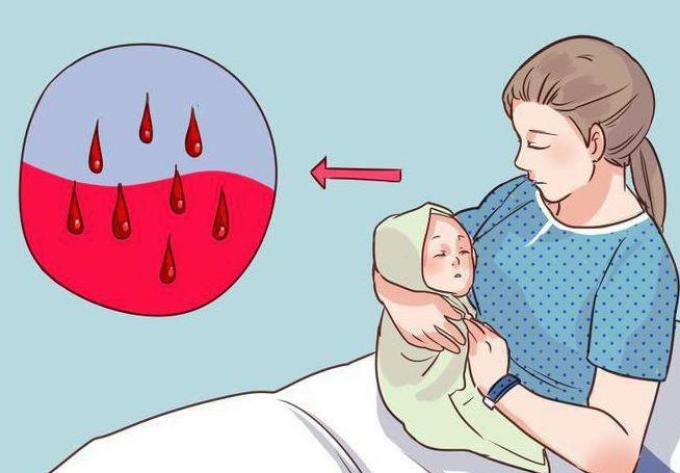 monthly and bleeding after delivery of
monthly and bleeding after delivery of Monthly, the same color is more brown at the beginning and at the end of the discharge. Duration of excretions will also be able to tell you about their nature: critical days last a week, and lochia - from four to eight weeks.
- The nature of these bleedings is diverse, because the lochia are the consequences of childbirth, and the months are a purely hormonal process. Every young mother must follow the nature of the
- secretions. If the suspected menses have an admixture of yellowish or greenish mucus, this is a "restless bell" that speaks of a purulent process in the body of
- . The fact is that there are rare cases when foreign tissues remain in the uterus cavity. On their own they could not leave the body in time and the inflammatory process is quite possible, as well as the defeat of the tissues
. The nature of the months after the birth, what is the difference between monthly after birth?
The nature of the menstrual period may change after delivery and even for the better. The fact is that most women have the wrong bend of the uterus. That is why it becomes difficult to get pregnant, and during periods you can sometimes experience strong and unbearable aching pains.
The birth leads the uterus into its normal and acceptable physiological form. That is why the pain sensations with the monthly disappear and they become easily tolerable.
 Character of the monthly after delivery, what is the difference between monthly after birth?
Character of the monthly after delivery, what is the difference between monthly after birth? After the first few months, the men usually get their usual form and last as long as they lasted until pregnancy. Deviations can be seen only in cases where a woman takes hormonal contraceptives. The nature of the secretions in this case becomes much less and lasts no longer than five days.
In another case, the establishment of a spiral in the uterus cavity - a popular contraceptive, characterizes the monthly, as abundant bright red discharge with impurities and dark-colored clots.
When will the monthly after delivery occur during breastfeeding?
Breastfeeding is a hormonal process that regulates the onset of the menstrual cycle in the female body. Ideal is the appearance of the first menstrual flow after one or two months of the end of breastfeeding. It often happens that women who have not too abundant inflow of milk observe the appearance of menstrual periods immediately after the period of lochia.
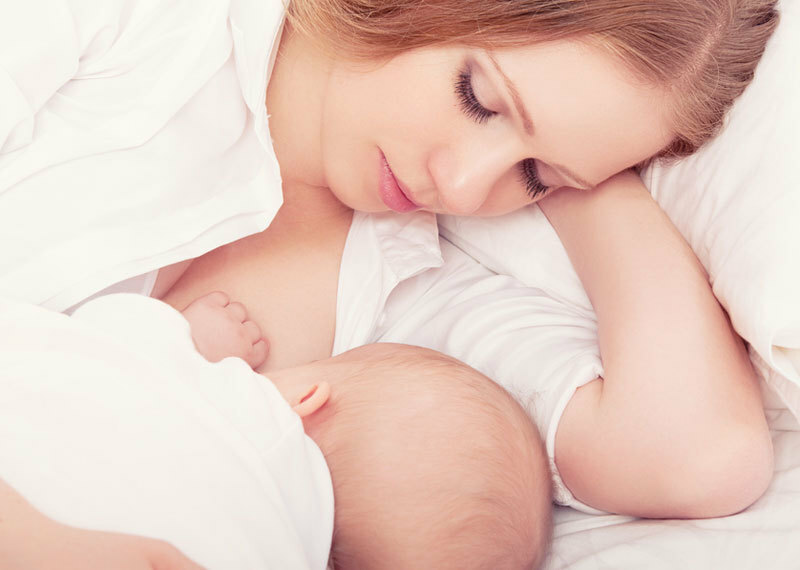 When will the monthly after delivery occur during breastfeeding?
When will the monthly after delivery occur during breastfeeding? In any case, you need to carefully monitor your health and the sensations with excreta. Note, if you do not have gaskets for more than two hours, this is an excuse for panic, as in such cases there may be no lochia, no menstruation, but internal bleeding.
Pay attention to how long the months come after completing breastfeeding. A time of two or three months is considered normal.
After the delivery of ample monthly, what should I do?
Each female organism is purely individual and judged in general about the female predisposition - it is difficult. However, there is one regularity: during breast-feeding, there should be no monthly ones. If they came, then something with the hormonal background of your body is not so, and if they do not come at all - you should see a doctor.
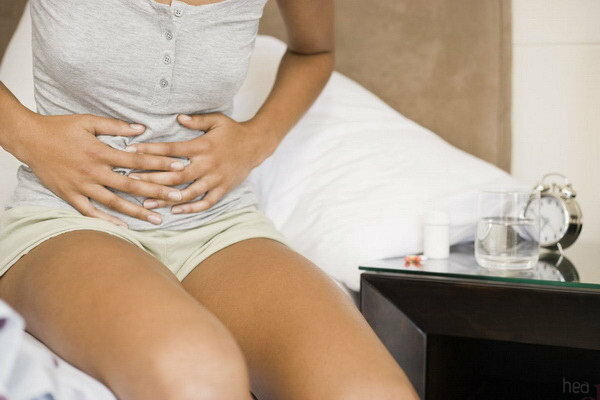 postpartum discharge
postpartum discharge observing copious monthly, first of all trace how large they are and how long they last. Gaskets should last more than two hours, if this pattern is not present - you need to see a doctor. Track the nature of excreta: what color are they, whether they are impurities or mucus.
The presence of mucus, pieces of foreign tissue and yellowish-greenish impurities suggests that your body has inflammation and a purulent infection. It requires immediate medical intervention and disposal.
Causes of copious monthly after childbirth
If you notice an abundant period after birth, do not rush to get scared. The fact is that restoring the menstrual cycle is a long process, requiring patience and time. Lohia - blood allocation, can stand out not a day, not two - but for two whole months! Therefore, it is not uncommon for women to confuse men with lochiaes.
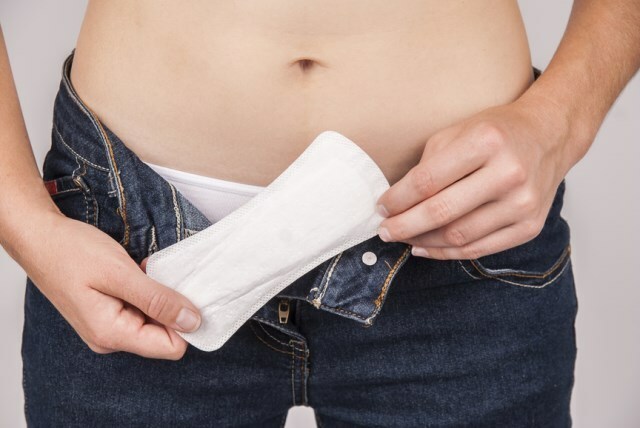 Causes of copious monthly after childbirth
Causes of copious monthly after childbirth The reason for the abundant periods is the active cleansing of the uterus from burst blood vessels, blood clots and capillaries, placental remains. The uterus tries to get rid of everything that should not be in it. Moreover, if the birth was too traumatic, it is possible that the wall of the uterus is severely damaged and it will heal longer than usual.
In other cases, if you observe menstrual periods longer than five days and they are abundant all this time, accompanied by fever, pain, mucus secretion - you may have internal bleeding and then you should immediately call your doctor.
Causes of painful periods after birth
Most often it happens that the birth of a child brings women only positive changes. The uterus stretches and assumes its normal physiological position. That's why most women have less pain during menstruation.
Causes of painful periods after childbirth can be:
- hormonal disorders in the female body
- traumatic births
- caesarean section
- presence of oncology
- inflammatory diseases
- insufficient purification of the uterus after birth
In each individual case when a woman feelsit is bad after the birth, including during periods, it is necessary in time to seek help from a doctor.
Why is there no monthly after delivery?
Monthly is the same hormonal process as breastfeeding and the birth itself. In those cases when the young mother is still feeding the baby, there is an important hormone in her body called "prolactin".As long as he is present in his normal and permissible quantity, critical days should not come. If lactation decreases and the amount of milk in the breast decreases, the production of this hormone also goes to a decline. In this development of events, one should expect an early arrival of menstruation.
Female organism in each case purely is individual and approach of the first allocations to predict with accuracy to 100 %.They come through year and even through three months after the genera . Exactly can say only then , that monthly and thoracic feeding - closely depend friend from friend . If newborn does not feed does , expect first monthly can later one only month .
Monthly after childbirth: responses
Tatiana: "Monthly started at me two months after the birth. Of course, I was surprised, because she fed her daughter with milk. But the explanation was found in the hormonal process, because the milk was in fact not so much, and therefore, it was impossible to count on adequate nutrition. In my case: little milk - fast monthly! "
Angelica: " After half a year of active breastfeeding, there have come monthly. I do not know why. She fed me a lot, she had milk. Can stress? And not regular meals? The monthly appeared not abundant and completely without pain. "
Sofia: " I can say that I got the perfect picture, because the monthly ones started only a month after I quit nursing. I think most women experience the same changes in their body. "
